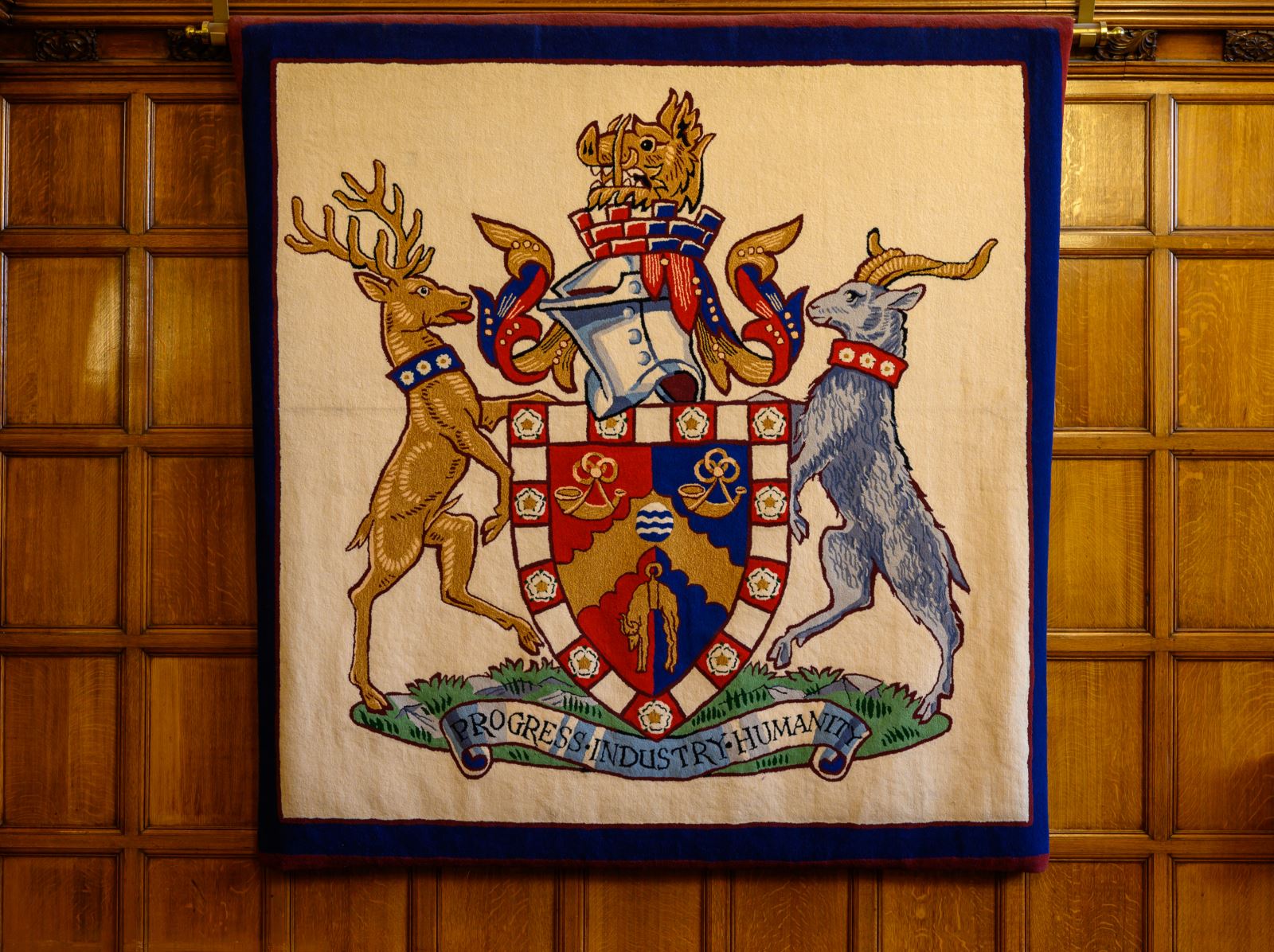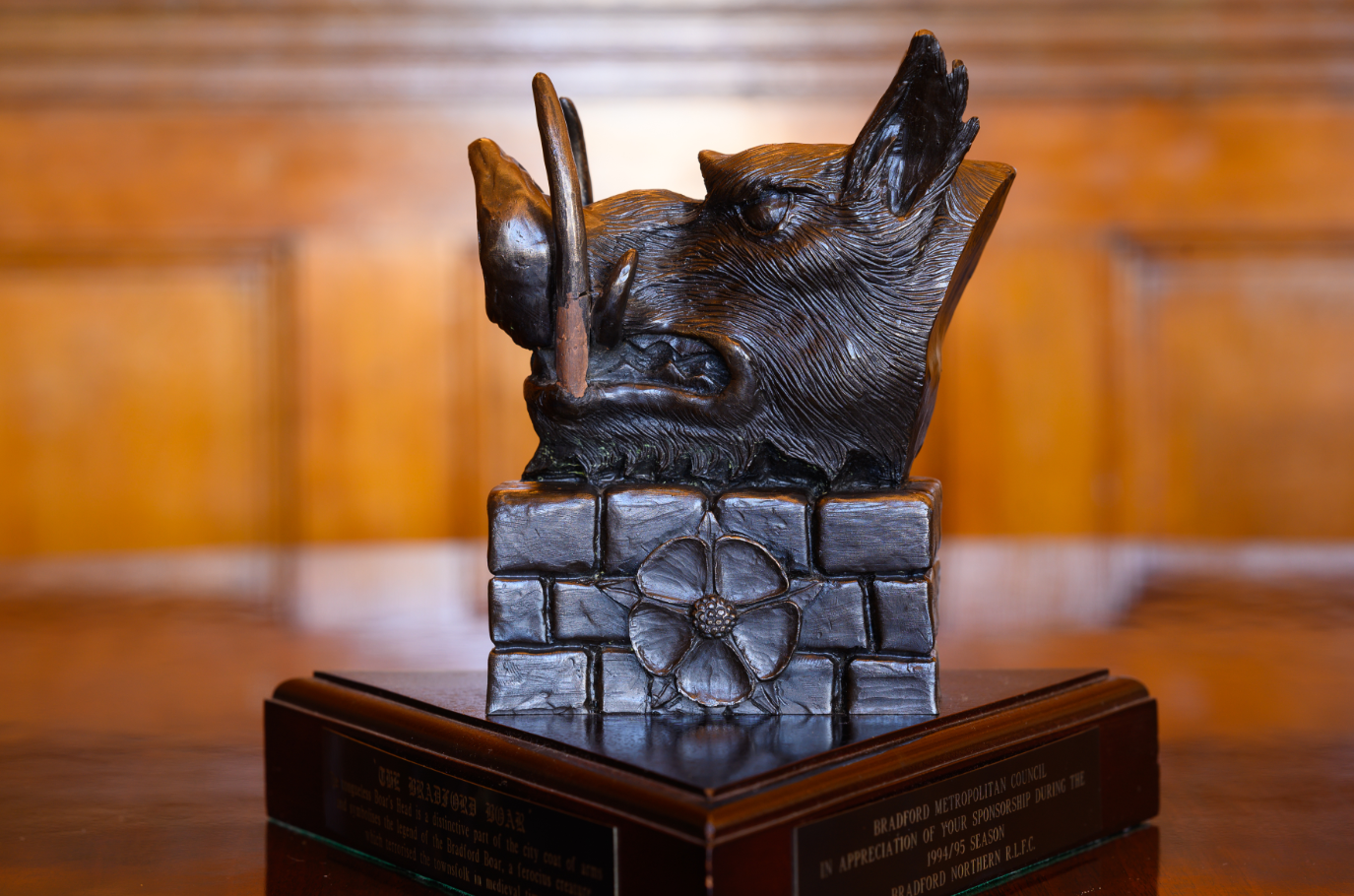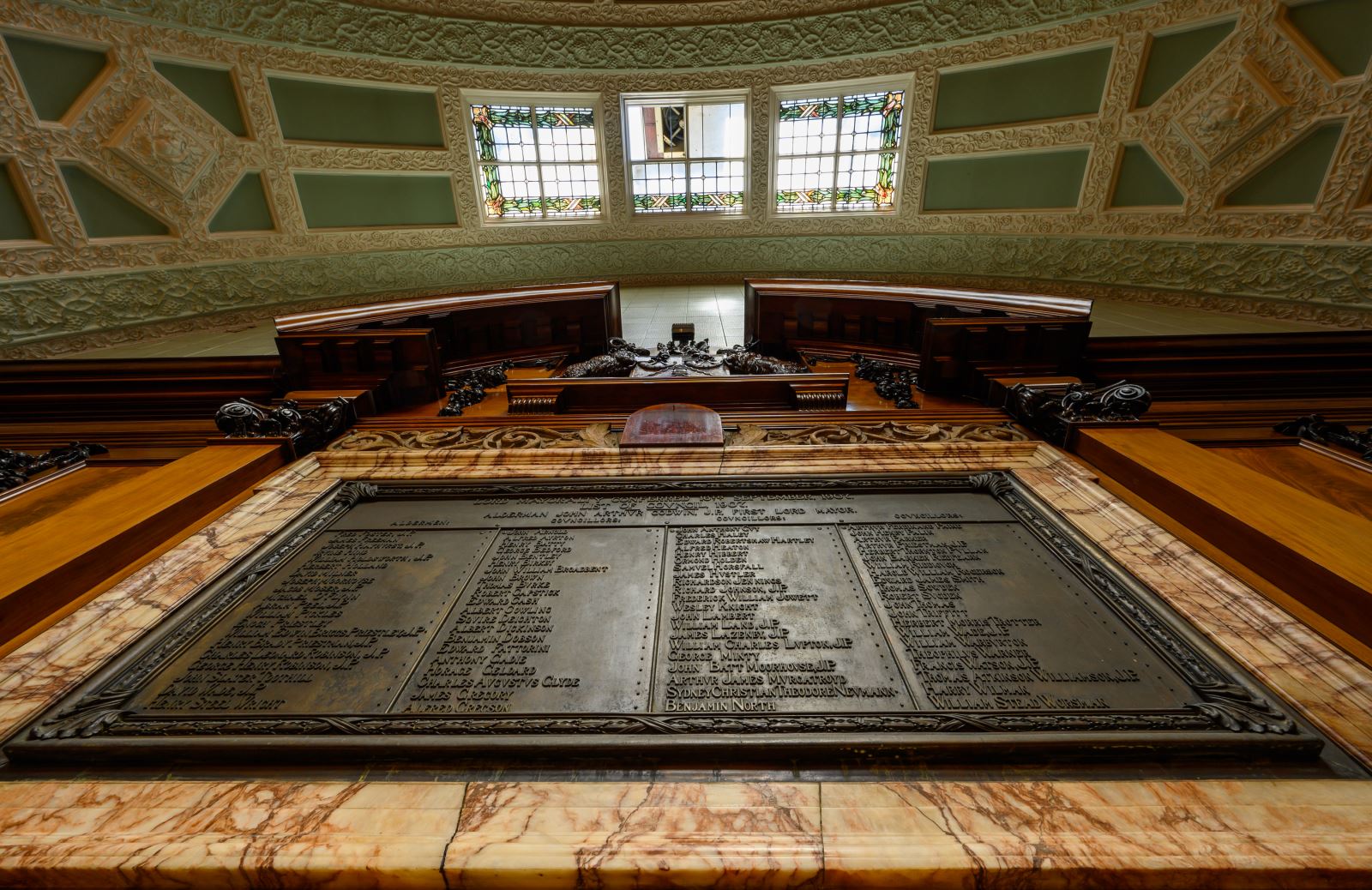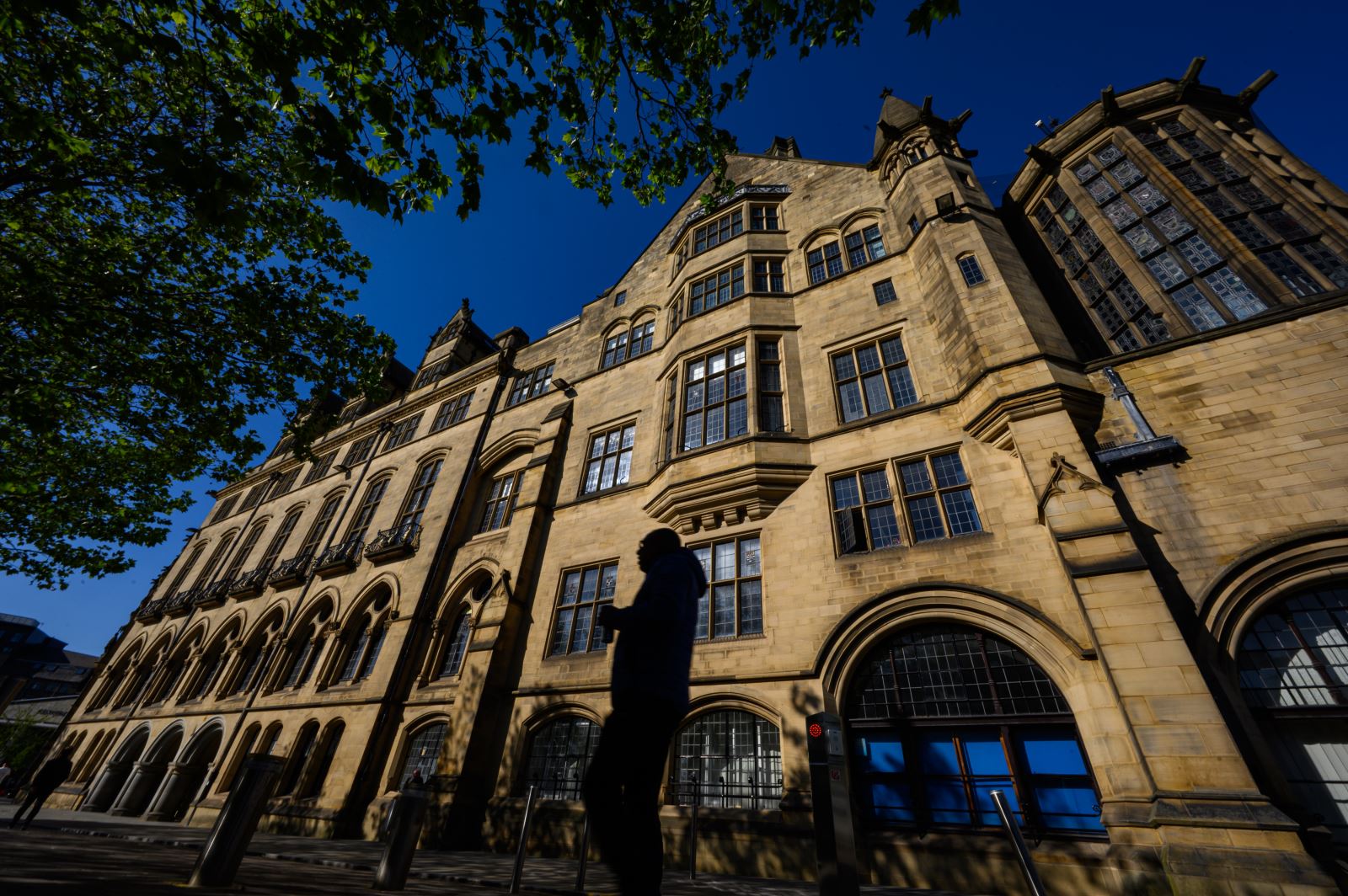
The industrial revolution saw Bradford boom as it took its place as a global giant of the textile industry. The population increased from 13,000 in 1801 to over 100,000 in the 1840’s by which time Bradford was home to over 120 mills. Rapid growth and industrialisation generated a host of social, health and environmental issues. Bradford Beck was severely polluted, poverty and disease were widespread, refuse piled high in the streets and housing was overcrowded with poor sanitation and ventilation. These conditions led to calls for a new body to govern and regulate the town and in 1847, Bradford became a Borough covering the parishes of Bradford, Bowling, Horton and Manningham and receiving a Charter of Incorporation allowing for the appointment of a Mayor, 14 aldermen and 42 Councillors.
The new Council worked in the Fire Station House but as operations expanded this became increasingly cramped and in 1869 a competition was held to design a new town hall. The winners were local architects Lockwood and Mawson whose works also included St Georges’ Hall, the Wool Exchange and the model village of Saltaire. Their gothic design, constructed with local stone, drew inspiration from the Palazzo Vecchio in Florence. The foundation stone was laid in 1870 and on 9 September 1873 the building that we now know as City Hall was officially opened amidst torrential rain and a parade the like of which Bradford had never seen.
The iconic building is symbolic of Victorian Bradford’s prosperity and confidence. It’s most striking feature, the 220-foot clock tower, houses a carillon comprised of 13 bells with a combined weight of 17 tons. The exterior of the building is adorned with the statues of British monarchs from William the Conqueror to Queen Victoria and of Oliver Cromwell.
The corporation continued to grow and in 1909 extensions designed by Richard Norman Shaw including the Council Chamber and Banqueting Hall were opened. In 1914 a new civic staircase was added. While Bradford became a city in 1897 it wasn’t until 1966 that the town hall became City Hall.
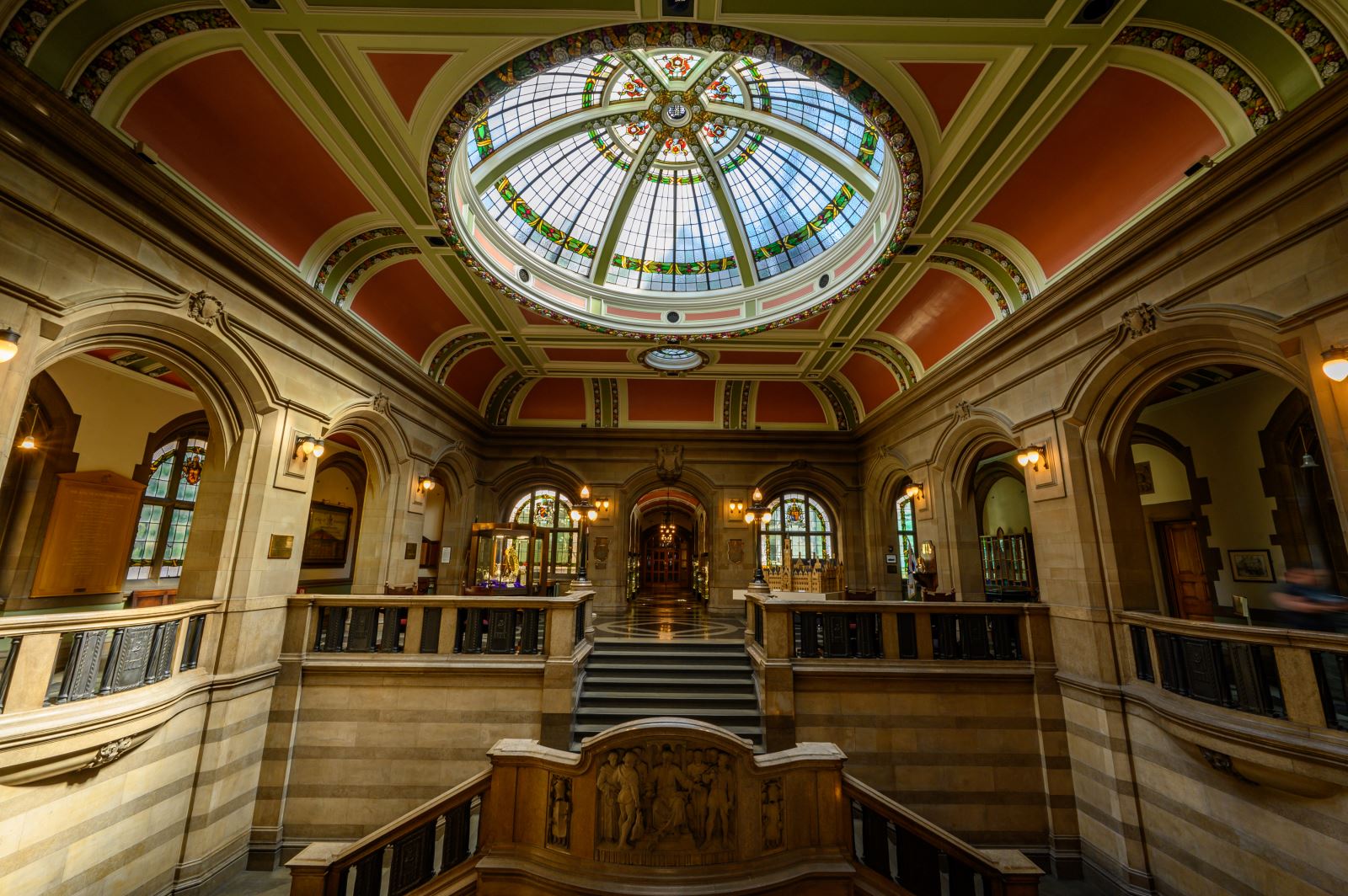
City Hall continues to function as the home of local democracy and civic life for Bradford District hosting well over a hundred formal council meetings each year. It houses the Lord Mayor’s offices and several council services. Many local people have become British citizens within its walls. The building is used to commemorate significant events including Armed Forces Day, Holocaust Memorial Day, Windrush Day and the anniversary of the Bradford City fire disaster; it accommodates major events and high-profile visitors including royalty and was one of the first places to be visited by King Charles III on his accession to the throne.
Coat of Arms
On becoming a corporation in 1847 Bradford was awarded a coat of arms. The motto “Labor Omnia Vincit” translates as “Work conquers all” reflecting the importance of Bradford’s industry, commerce and enterprise and its work ethic. The horns refer to the tradition which required John Northrop of Manningham upon hearing the blowing of a horn on St Martin’s Day was to wait on John of Gaunt the Lord of the Manor as he travelled his estates and to conduct him safely to Pontefract Castle. This formed part of the arrangement through which Northrop was granted his lands. The boar’s head and the well in the centre of the shield refer to the legend of the Bradford boar which was purportedly slain by John Northrop and has become the principal emblem of Bradford. The black ram and angora goat represent the wool used in local industries and the white roses around their necks are emblems of Yorkshire.
In the local government re-organisation of 1974 Bradford became a Metropolitan District Council which brought together Bradford and ten other local councils including Keighley, Shipley, Bingley and Ilkley. The Coat of Arms was re-designed to incorporate representations of the new geography. Based on the Bradford shield the arms retained two of the horns with the third replaced by a golden fleece – symbolic of local industry and a component of the arms of five of the former councils included in the Metropolitan District. Eleven white roses represent each of the newly combined councils. The base symbolises rocky moorland, the heraldic fountain in the centre is taken from the arms of Keighley and Ilkley and a stag from the arms of Keighley replaces the black ram. The boar’s head remains at the top of the arms. The motto is “Progress Industry Humanity”.
The Legend of the Bradford Boar
All across Bradford and round every corner of City Hall you’ll see depictions of the Bradford boar which has pride of place on the coat of arms.
A huge and ravenous wild boar lived in Bradford’s Cliffe Wood where it drank from a well there that was used by local people. The boar frequently terrorised the populace and caused significant damage to land and property. The Lord of the Manor, John of Gaunt, Duke of Lancaster who owned vast estates in Northern England, offered a reward to anyone who could kill the boar and bring its head to his Manor House as proof of their success. A local man, said to be John Northrop, lay in wait at the well and when the boar appeared he killed it, cut out its tongue as evidence of his success and headed for the local tavern to celebrate before travelling on to the Manor House. In the meantime, a rival hunter came across the dead boar and cut off its head before setting off to lay claim to the reward. This second hunter arrived at the Manor House first but was unable to account for the boar’s missing tongue. John Northrop then arrived with the tongue to confirm that he was the true winner and was duly rewarded with land in Great Horton known as Hunt’s Yard.
So, the Bradford boar has no tongue, and the legend is depicted on the frieze decorating City Hall’s civic staircase. You can see John Northrop on the right of the image holding the tongue. On the wall of the Banqueting Hall is a sculpture depicting the slaying of the beast.
Bradford’s Radical Reformers
Bradford District is associated with a long line of social and political pioneers who have helped to shape local and national reform or acted as role models for others to follow.
1847, the year of Bradford’s incorporation saw the introduction of the Factories Act which restricted the numbers of hours that could be worked by women and children in textile mills. It marked the culmination of years of campaigning by Richard Oastler who had been moved by the plight of children working in Bradford’s mills.
In the 1850’s wool tycoon Titus Salt began building the model village of Saltaire which provided good quality housing, washhouses with running water schools, an educational institute, almshouses a hospital and churches. It represented a landmark in enlightened urban planning. Lesser known is the model village of Ripley Ville built in Bowling, Bradford by businessman, philanthropist and politician Sir Henry Ripley a Bradford Councillor and later MP.
Bradford MP William Forster was instrumental in the design and implementation of the Elementary Education Act 1870 which was the first piece of legislation to deal specifically with the provision of education and a commitment to provision on a national scale. It established local education authorities with defined powers and authorized public money to improve existing schools.
In 1877 Wapping Road Primary School opened in Bradford and was the first in Britain to have a school swimming pool.
The Manningham Mills strike of 1891 was to be a pivotal moment in the history of the labour movement. The strike was in response to wage cuts as a result of US import tariffs affecting the mill’s profits and at its height saw 5,000 people down tools and riots in the streets before hunger forced people back to work. As a result of the strike previously unorganised textile workers flocked to the trade unions and shaped a working-class political movement with the Bradford Labour Union leading ultimately to the formation of the Independent Labour Party in Bradford in 1893 – the forerunner of the modern Labour Party.
The strikers were supported by Julia Varley who urged them to join Trade Unions. At the age of 15 she had become the secretary of the Bradford Weavers and Textiles Workers Union. She was the first woman to join Bradford Trades Council and went on to become a prominent suffragette and trade unionist whose achievements included establishing a Domestic Servants Union and acting as the Women’s Workers member of the TUC General Council.
In 1907 Bradford became the first Council in the country to implement the Provision of School Meals Act and provide free school meals to under-privileged children. This followed years of campaigning led by Margaret Mcmillan a nursery school pioneer who agitated for reforms to improve the health of children. Along with Bradford's school medical officer, James Kerr, she carried out the first medical inspection of elementary school children in Britain. They published a report and began a campaign for local authorities to install bathrooms, improve ventilation and supply free school meals for children.
Margaret Mcmillan worked closely with Fred Jowet and both were members of the School Board that introduced free school meals – research showed that 3,000 Bradford children needed to be fed each day. Jowet went on to become MP for Bradford West and Bradford East and to serve as First Commissioner of Works in the first Labour Government where he secured the investment needed to improve 60,000 government built homes.
Bradford born Miriam Lord a staunch supporter of Margaret Mcmillan vowed to continue her work in Bradford. Miriam became Superintendent of Lilycroft Open-air nursery school which was regarded as a flagship model for the emerging nursery school movement. The school met social and medical needs of local families as well as providing education.
Bradford’s influential and pioneering traditions continue to this day, it was among the first UK cities to become a City of Sanctuary offering support and welcome to refugees; Born in Bradford is undertaking globally important research tracking the lives of local families to determine what keeps them healthy and happy; the Council recently established the first Clean Air Zone in the North of England with the aim of improving air quality and health.
Notable politicians include Keighley’s Margaret Wintringham, the second woman and the first British born woman to take her seat in Parliament; Keighley had previously seen Nina Boyle establish a precedence for women candidates when the returning officer at the 1918 bye-election said he was prepared to accept her nomination. Denis Healey – a resident of Keighley and pupil at Bradford Grammar School went on to become Chancellor of the Exchequer and the UK’s longest serving Minister of Defence. Barbara Castle was one of the longest serving female MPs in British history, she had a number of cabinet roles including Secretary of State for Health and Social Services and Secretary of State for Employment, she is the only woman to have been First Secretary of State. Eric Pickles as leader of Bradford Council, attracted national attention with a controversial blueprint for Conservative Councils before going on to become Secretary of State for Communities and local government.
Related
Comments
Comments are disabled for this post.


 to add an item to your Itinerary basket.
to add an item to your Itinerary basket.


